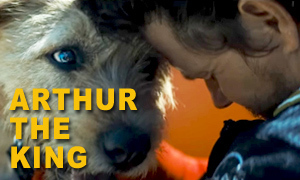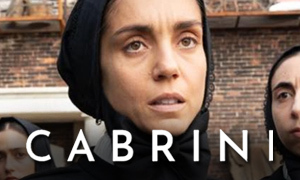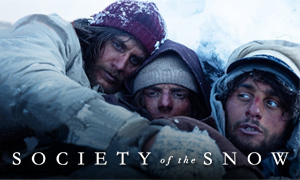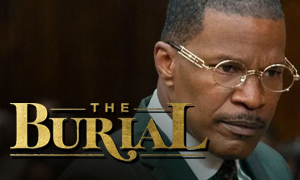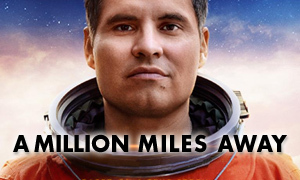Society of the Snow: History vs. Hollywood
Enzo Vogrincic
Born: March 22, 1993
Birthplace:
Montevideo, Uruguay
Numa Turcatti
Born: October 30, 1947
Birthplace: Montevideo, Uruguay
Death: December 11, 1972, The Valley of Tears, Mendoza Province, Argentina (infection from leg injury sustained during avalanche)
Bio: Best Friend of Rugby Player Pancho Delgado
Agustín Pardella
Born: January 12, 1994
Birthplace:
Buenos Aires, Argentina
Fernando 'Nando' Parrado
Born: December 9, 1949
Birthplace: Montevideo, Uruguay
Bio: Rugby Player who Hiked to Get Help
Matías Recalt
Born: September 14, 2001
Birthplace:
Mexico
Roberto Canessa
Born: January 17, 1953
Birthplace: Montevideo, Uruguay
Bio: Medical Student and Rugby Player who Hiked to Get Help
Diego Vegezzi
Marcelo Pérez del Castillo
Born: March 26, 1947
Birthplace: Montevideo, Uruguay
Death: October 29, 1972, Mendoza Province, Argentina (avalanche)
Bio: Rugby Team Captain who Took on Leadership Role After Crash
Blas Polidori
Gustavo 'Coco' Nicolich
Born: August 3, 1952
Birthplace: Montevideo, Uruguay
Death: October 29, 1972, Mendoza Province, Argentina (avalanche)
Bio: Rugby Player and Veterinary Medicine Student
Valentino Alonso
Born: 1994
Birthplace:
Buenos Aires, Argentina
Alfredo 'Pancho' Delgado
Born: November 1947
Birthplace: Montevideo, Uruguay
Bio: Best Friend of Numa Turcatti
Esteban Kukuriczka
Born: April 2, 2002
Birthplace:
Buenos Aires, Argentina
Adolfo 'Fito' Strauch
Born: April 19, 1948
Birthplace: Montevideo, Uruguay
Bio: Cousin of Eduardo Strauch, who Convinced Him to Go
Alfonsina Carrocio
Birthplace:
Buenos Aires City, Argentina
Susana 'Susy' Parrado
Born: 1952
Death: October 19, 1972, Mendoza Province, Argentina (succumbed to injuries 6 days after crash)
Bio: Sister of Nando Parrado
Tomas Wolf
Born: 2002
Birthplace:
Spain
Gustavo Zerbino
Born: May 16, 1953
Birthplace: Montevideo, Uruguay
Bio: Rugby Player | He and Roberto Canessa acted as "doctors."
Esteban Bigliardi
Born: August 29, 1973
Birthplace:
Buenos Aires, Argentina
Javier Methol
Born: December 11, 1935
Birthplace: Montevideo, Uruguay
Death: June 4, 2015, Montevideo, Uruguay (cancer)
Bio: Worked for Family's Cigarette Company | Photo: sociedaddelanieve.com
How many people were on Uruguayan Air Force Flight 571 that crashed in the Andes Mountains?
The Society of the Snow true story confirms that the flight consisted of 45 people, including 40 passengers and 5 crew members. 19 of the passengers were members of the Old Christians Club rugby union team. Most of the remaining passengers included the rugby team's family members, friends, and fans. The main character in the movie, Numa Turcatti (portrayed by Enzo Vogrincic), was a friend of player Pancho Delgado.
Does the movie accurately depict the flight path of Uruguayan Air Force Flight 571?
No. In real life, the flight, which departed from Carrasco International Airport in Montevideo, Uruguay on October 12, 1972 for Santiago, Chile, was forced to stop in Mendoza, Argentina due to bad weather over the Andes. The passengers and crew stayed overnight in Mendoza as they waited for the weather conditions to improve. This entire stop is omitted from the movie, most likely to avoid adding to the film's already lengthy runtime.
Is Society of the Snow based on a book?
Directed by J.A. Bayona, the movie is based on the 2023 book of the same name by Pablo Vierci, a personal friend of the Miracle of the Andes survivors. The author had previously collaborated with survivor Roberto Canessa for his 2016 book I Had to Survive: How a Plane Crash in the Andes Inspired My Calling to Save Lives. After living through the harrowing ordeal, Canessa went on to become a pediatric cardiologist. He is portrayed by Matías Recalt in the film.
Did Uruguayan Air Force Flight 571 crash into a mountain due to the pilot believing he had already flown over the Andes?
A Society of the Snow fact-check reveals that in real life it was actually an inexperienced co-pilot who was controlling the plane when he mistakenly thought he had already flown over the Andes. The co-pilot, Lieutenant-Colonel Dante Héctor Lagurara, mistakenly believed he had already flown past Curicó, the point at which he was to turn the plane north and begin his descent for Pudahuel Airport in Santiago, Chile. He failed to realize that his instrument readings were still indicating he was 37 to 43 miles east of Curicó.
With an Andes mountaintop hidden in the clouds ahead, he tried to pull up when he saw the mountain, as Flight 571 does in the movie, but the plane made contact with a mountain ridge, tearing off both wings and the tail cone. What was left of the fuselage went careening down a glacier at an estimated speed of 220 mph before colliding with a mound of ice and snow. The location of the Andes crash site would later become known as The Valley of Tears for reasons we'll explain in the following questions.
Did the co-pilot utter a few words to the passengers following the crash?
In the movie's version, the co-pilot briefly talks to the survivors after the crash and tries to tell them that they "passed Curicó," which he had mistakenly believed and appears to still be in a state of confusion over. He also says, "May God be with you." In real life, the pilot, Colonel Julio César Ferradas, died upon impact. Like in the movie, the co-pilot, Lieutenant-Colonel Dante Héctor Lagurara, did survive the impact and talked to the survivors. As seen in the film, he was trapped in his seat by the control panel. In real life, he asked some of the passengers to retrieve his gun and shoot him to end his suffering. This is omitted from the movie. The passengers refused to end his life and he died the following day.
Is their descent into cannibalism depicted accurately?
In order to survive for two-and-a-half months in unforgiving conditions without conventional food, all 16 survivors resorted to cannibalism in order to survive. It wasn't a decision that they made lightly. The little food they were able to find on the plane, which included dried plums, a few dates, a tin of almonds, some candy, three little jars of jam, a tin of mussels, and a few bottles of wine, only lasted a week despite rationing it. There were no wild animals to hunt or vegetation to be found. They started to become ill after their rations were gone. They tried to eat leather from belts, shoes, and luggage.
As Roman Catholics, their religious convictions made the decision to eat the dead even more difficult, as some feared it would lead to eternal damnation. However, the bodies, most of whom were close friends, relatives, or classmates, were preserved in the ice and snow and contained the life-saving protein they needed to survive. Roberto Canessa, a 19-year-old medical student and rugby player at the time, said that their "own bodies were consuming themselves just to remain alive." They knew that it wouldn't be long before they would become too depleted to come back from starvation. In an article for the Daily Mail, Canessa wrote of their difficult decision to descend into cannibalism.
We knew the answer, but it was too terrible to contemplate.
The bodies of our friends and teammates, preserved outside in the snow and ice, contained vital, life-giving protein that could help us survive. But could we do it?
For a long time we agonized. I went out in the snow and prayed to God for guidance. Without His consent, I felt I would be violating the memory of my friends; that I would be stealing their souls.
We wondered whether we were going mad even to contemplate such a thing. Had we turned into brute savages? Or was this the only sane thing to do? Truly, we were pushing the limits of our fear.
In a letter to his girlfriend, Rossina Machitelli, Coco Nicolich, who perished in an avalanche, explained:
One thing that will seem incredible to you also seems incredible to me; Today we begin to cut up the dead to eat them, we have no other choice. For my part, I asked God in everything possible that this day would never come, but it came and we have to face it with courage and faith. Faith because I arrived to the conclusion that bodies are there because God put them, and since the only thing that matters is the soul, I don't have to have great remorse and if the day came and I could save someone with my body, I would gladly do it.
In researching how accurate Society of the Snow is, we learned that they turned to their faith to help justify their decision to eat the bodies of the dead. Some aligned doing so with Holy Communion, the conversion of bread and wine into the Body and Blood of Christ. Others turned to the Bible, reciting John 15:13. "No man hath greater love than this: That he lay down his life for his friends."
Did Numa Turcatti injure his leg when he kicked out one of the plane's cockpit windows?
No. In the movie, the avalanche traps the group in the fuselage for three days. Numa becomes determined to free them and frantically starts to kick out one of the cockpit's windows. As his foot breaks the glass, he sustains a deep cut to his leg near his ankle. However, he does manage to break through the snow and free the group from their dark tomb. It's an act of heroism for Numa, the narrator of the story, but it didn't happen that way in real life.
For hours, they took turns digging a passage through the cockpit. Gustavo dug and reached the pilot's seat. He stood on the pilot's dead body and was able to reach the window. Gustavo, Roberto, and Roy Harley each tried to push the window out of its frame, which was made more difficult by the snow pressing down on it. It was Roy Harley who pushed it free with a "furious shove." He dug up through several feet of snow and was able to look around. He saw that the storm was still raging and climbed back down where they waited out the storm until November 1.
In reality, Numa didn't sustain an injury to his leg from kicking out a window. According to Nando Parrado's memoir Miracle in the Andes: 72 Days on the Mountain and My Long Trek Home, Numa injured his leg in a less dramatic manner. The book states that "someone trying to make his way across the dark fuselage had stepped on Numa's calf as he lay on the floor. An ugly bruise quickly appeared, and when Roberto saw how badly the leg had swollen, he advised Numa to drop out of the expedition." The leg infection, coupled with the fact that Numa refused to eat as much "meat" as the others, is ultimately what led to his demise.
How long were the Andes plane crash survivors stranded?
They were stranded for a total of 72 days following the crash.
How many people survived the Andes plane crash?
Of the 45 souls on board Uruguayan Air Force Flight 571, only 16 survived the disaster. Nine passengers and three crew members died during the crash and five more died during the first night due to the critical state of their injuries and the bitter cold temperatures (the survivors were stranded at approximately 11,710 feet). During the two-and-a-half months they were stranded on the glacier, 12 more would die due to avalanches, starvation, and exposure.
Did two Andes survivors hike to find help?
Yes. As the weather conditions improved into late spring, Roberto Canessa, Nando Parrado, and Antonio Vizintín left the group to find help. Vizintín eventually turned back to conserve food for the others when they realized the hike was going to take longer than expected. Lacking mountaineering equipment, they climbed the 15,260-foot mountain peak on the western edge of the glacier. They journeyed for 10 days into Chile, covering a distance of 38 miles until they reached help.
Did Roberto and Nando have enough food for their hike to Chile?
No. Despite Antonio "Tintin" Vizintín's character in the movie telling the others that Roberto and Nando have enough food for their journey, a fact-check exposes that this is not true. In real life, they only took three days' worth of food for what turned out to be a ten-day journey. It's true that Vizintín decided to turn back when they realized that finding help was going to take much longer than they had anticipated and there wasn't enough food to sustain all three of them. He used an aircraft seat as a sled during most of his downhill journey back and arrived at the fuselage on Friday, December 15.
Were Roberto Canessa and Nando Parrado rescued by a Chilean arriero?
Yes, but in real life, they saw three men across the river, not one. Sergio Catalán, the arriero depicted in the film, was one of the men. He shouted, "Tomorrow!" indicating he would be back the next day. When he returned the following day, they used a rock to throw a note across the river to each other. Sergio Catalán went off to get help from the nearest town, which was a 10-hour journey on horseback. While he was gone, Roberto Canessa and Nando Parrado were cared for by two peasants, Armando and Enrique, who fed them and provided them with a hut and beds. Catalán returned the following day with a dozen Chilean mounted policemen.
Were the Andes plane crash survivors all rescued at the same time by helicopter?
No. The rescue of the 14 remaining survivors wasn't as easy as it's portrayed to be in Society of the Snow. Our fact vs. fiction analysis reveals that two Bell UH-1 helicopters provided by the Chilean Air Force arrived to rescue the survivors on December 22, 1972. According to TIME, due to the helicopters' weight limits, the high altitude, and bad weather, they were only able to rescue six of the survivors that day. Four rescuers stayed behind to care for the remaining eight, who were rescued the following day, December 23. The movie incorrectly implies they were all rescued at the same time. The survivors were treated in Santiago hospitals for dehydration, frostbite, altitude sickness, malnutrition, scurvy and broken bones.
Did the Andes survivors get in trouble for cannibalism?
Survivor Roberto Canessa said that he was tormented with worry over what others would think of their decision to eat the dead in order to survive. He was particularly worried about how the families of the dead would react. "The only thing I [wanted] to do is go to the families of my friends who died and tell them what happened. I don't expect them to understand but they should know what happened," he told People magazine. "But thank God, people were very receptive and very supportive and they [considered] what we did something we had to do so everything went very smoothly." When he told his mother that they had to eat their dead friends, she responded, "That's okay, that's okay, sweetie." At first, they only told their families.
The movie omits much of what happened in the immediate aftermath of their rescue, including the fact that for several days they were hesitant to explain how they survived. At first, they told reporters that they stayed alive by eating packaged food and cheese, before turning to local vegetation (in reality, there was none). On December 26, 1972, three days after the final group of survivors were rescued, two pictures of a half-eaten human leg were published on the front page of two newspapers in Chile, which reported that the crash survivors had turned to cannibalism to survive.
Two days later, the Andes survivors held a press conference to discuss their experience, including what they did to survive. Public opinion was initially harsh on them, but when they explained that they had made a pact to give their flesh to the others if they died, the criticisms subsided. Their story eventually became known as the Miracle of the Andes.
Was it important to director J.A. Bayona to make Society of the Snow historically accurate?
Yes. In fact, Bayona went to significant lengths to make sure Society of the Snow stuck as closely as possible to the true story of the Andes plane crash. According to USA Today, he carried out 100 hours of interviews with the survivors who were still alive 50 years after the tragedy. For example, his conversations with survivor Adolfo 'Fito' Strauch, who was very open in discussing what happened, helped to shape his character in the film. It also helps that there is a plethora of source material Bayona could turn to to make sure the movie adhered closely to the facts.
"We tried to be as close to what happened as possible," he told USA Today. Bayona says that he instructed the writers not to change the facts to make the movie more appealing but to instead focus on understanding the psychology of their decision to do what they did and to convey that in the film. He felt it was vital to "tell this story from the perspective of one of the dead." By using the testimony of the survivors, Bayona wanted his film to give a voice to those who perished.
Do any of the survivors have cameos in Society of the Snow?
Yes. Several of the real-life survivors have cameos in the movie, including Nando Parrado, Roberto Canessa, and Carlitos Páez. Parrado can be seen at the beginning opening an airport door for the actor who portrays him in the film, Agustín Pardella. Roberto Canessa appears at the hospital after the rescue, portraying one of the doctors. He can be seen right behind Matías Recalt, the actor who plays him. Carlitos Páez, pictured below with his father and on set with the actor who plays him, has at least two cameos in the movie. He's the one on the radio reading off the names. He can also be seen waiting for his son to get off the helicopter as they touch down.
Does Society of the Snow feature South American actors?
Yes. Unlike many movies based on true stories that cast, for example, British actors or Americans to play characters of foreign descent, Society of the Snow's cast is made up almost entirely of South American actors, specifically of Argentine and Uruguayan descent. This is detailed in the Society of the Snow cast vs. real people section at the top of this article.
Was Society of the Snow filmed at the real crash site?
Not exactly. In order to add to the film's realism, director J.A. Bayona decided to shoot footage at the actual Andes crash site, El Valle de las Lágrimas, which translates to The Valley of Tears (a name given to the location after the tragedy). However, he only shot the backgrounds there. The main parts of the film that take place at the fuselage were shot in Sierra Nevada at Laguna de las Yeguas. The background footage from the real location in the Andes was added using visual effects. For shooting interiors (including in the helicopter) and when the weather didn't permit them to shoot up on the mountain, they filmed in front of a giant LED screen that had the Andes background on it.
Other filming locations included Andalucía, Spain; Montevideo, Uruguay; and other locations in the Andes (both in Argentina and Chile). The movie was shot in chronological order, which makes it feel more realistic due to the characters' emerging facial hair, thinning bodies, and lengthening nails. The coordinates of the exact location of the real crash site are: 34°45'53.5"S 70°17'06.6"W.
Have any other movies been made about the 1972 Andes plane crash?
Yes. Director Frank Marshall's 1993 movie Alive starring Ethan Hawke as survivor Nando Parrado tells the story of the Miracle of the Andes. That film used the Purcell Mountains in British Columbia as a substitute for the Andes.
Link-to-Learn More:

